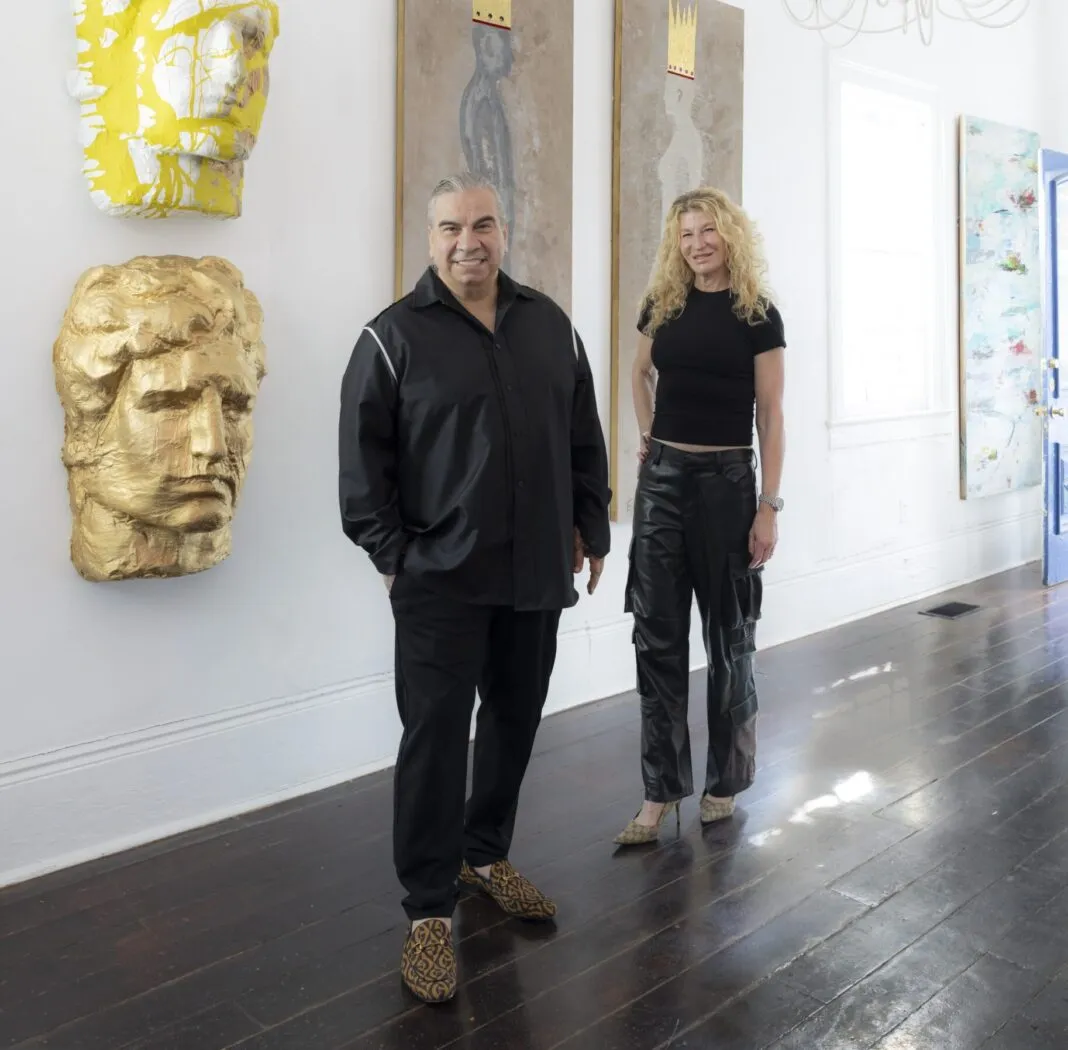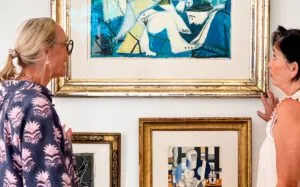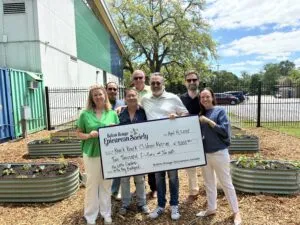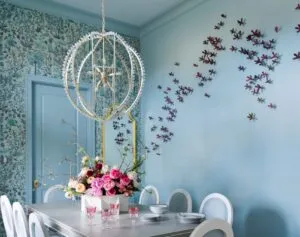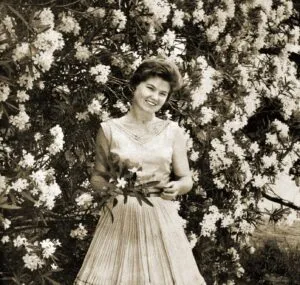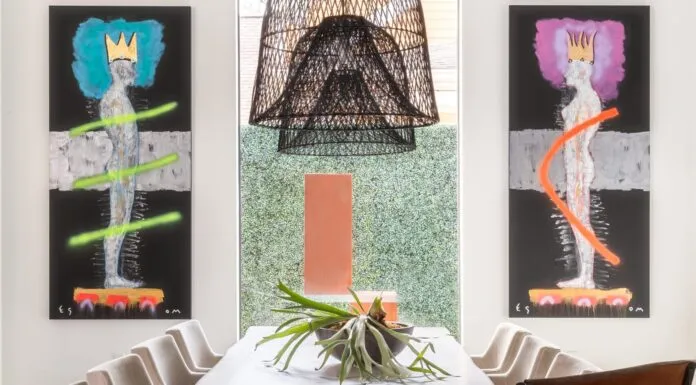Patron Paint: The husband-and-wife duo behind ESOM ART share their creative spirit
Paul McCartney was spotted at Saba. Or was it Commander’s Palace? Or both. Maybe. It’s the day after New Orleans hosted the Super Bowl, and a large serving of America’s cultural elite, and while the former Beatle lays on everyone’s lips, welcoming gallery staff, photo equipment and visitors into the ESOM Gallery on a tree-lined stretch of Magazine Street is the doe-eyed and laurel-wreathed face at the center of a saintly, gold-splashed canvas leaning on the shop stoop like a nosy neighbor that has a story to tell.
If Amedeo Modigliani found his ultimate muse along the fever dream fantasia route of Bacchus, her face would look a lot like this—a little Shakespearian, a little Roman Catholic, and triumphantly stoic.
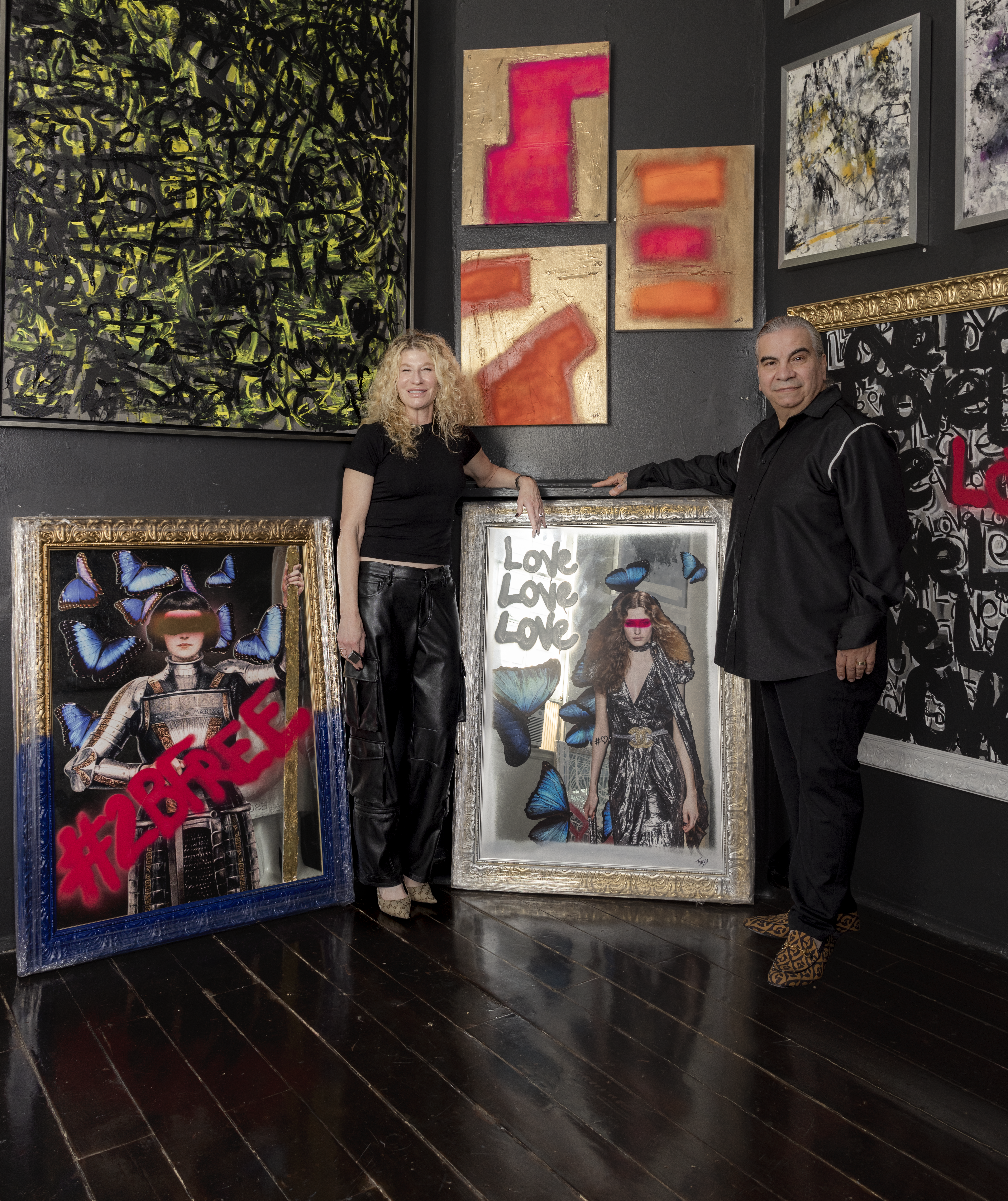
The artist next to this light-dappled piece is Tony Mose, and he is cracking jokes with a meter maid. “Leave it off or break it!” he calls out to her. It earns a giddy laugh and a knowing glance. Clearly, this isn’t her first time bantering with the gregarious creative whose silver ponytail belies the childlike energy he carries everywhere he goes.
Inside, Tony’s wife Tracey Mose, herself an artist, and their gallery director Ronnie Dufrene move canvases around for the photoshoot. Two of Tony’s large polystyrene heads look on approvingly, like founding fathers. At photographer Sara Essex Bradley’s suggestion, Tracey puts on one of the new bracelets she designed, which aren’t even listed on the website yet.
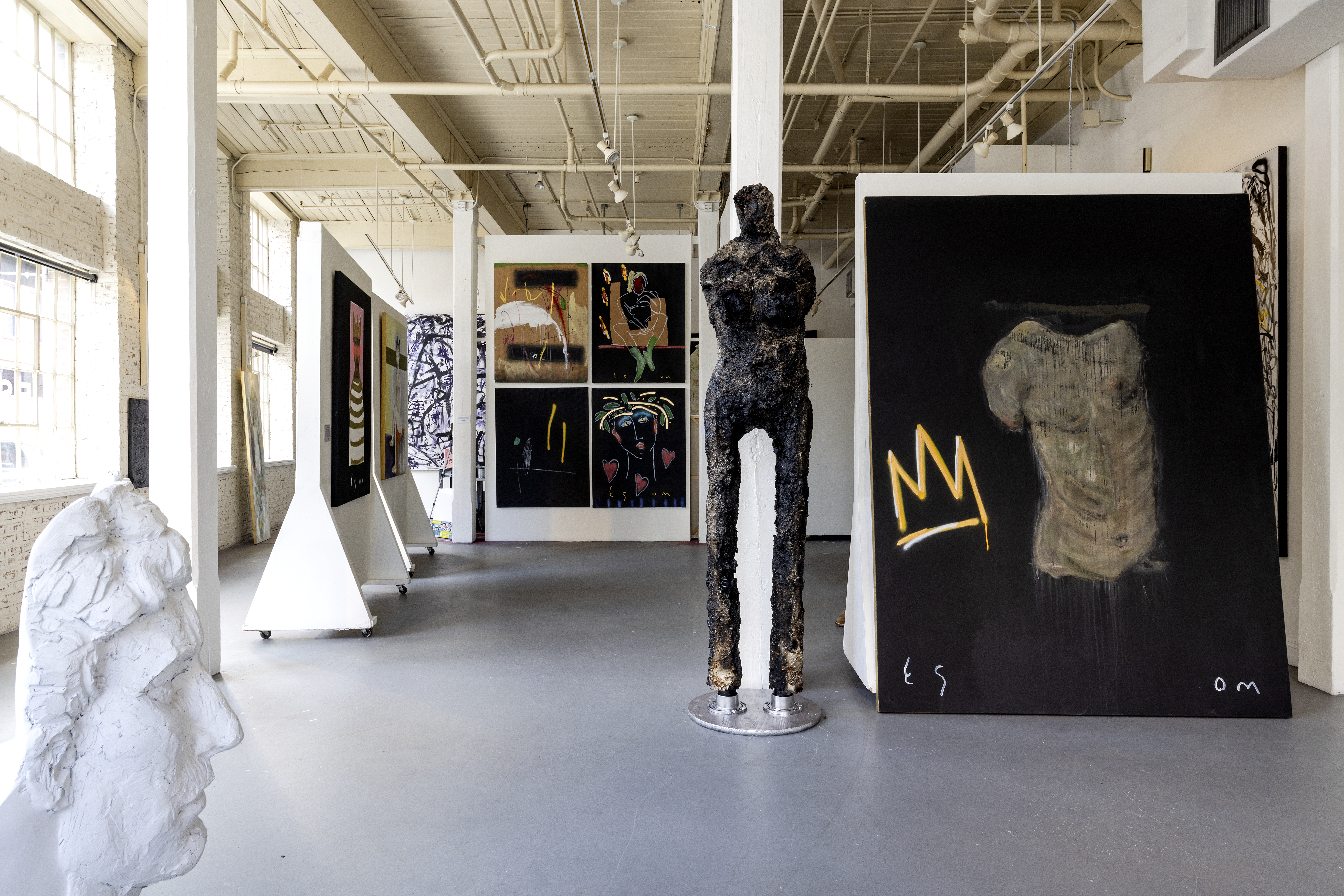
That’s how busy this dynamic couple stays. Not in a hustle culture way, but a creative flow. No matter where Paul McCartney was on Super Bowl Sunday, Tony was painting the scales of justice in his studio for a commission, while Tracey worked in their Julia Street gallery right up until kickoff.
“‘What you have is a vocation, not just an occupation’—a nun told me that one time,” Tony says. “There’s a real purpose to what we’re doing, but explaining faith is difficult. We all have belief in some form, though, and you know when you need it.”
For years, Tony and Tracey split time between New Orleans and Baton Rouge. But it was this sense of a calling that drove them both forward through the challenges of becoming full-time artists and building ESOM into a brand name across Louisiana and the Deep South.
“There’s a real purpose to what we’re doing, but explaining faith is difficult. We all have belief in some form, though, and you know when you need it.”
“It’s not a superficial thing,” Tracey says of the crowns Tony often places on the heads of his subjects. “It’s ‘How can you be a king or queen in your own way? How do you work through a struggle and still give your light to people?’ Well, that’s the kind of person Tony is. And that’s what comes through in his artwork.”
Among other outlets, Tony sold his early pieces at Circa 1857 for years and often slept in the back of their Magazine Street gallery— “Until we got too old for that to be cute,” Tracey says—while she commuted to her corporate retail job. Now, Tracey wears a dozen hats on the business side of operating the couple’s galleries on Magazine Street, Royal Street and Julia Street and oversees a handful of employees. “I’m pretty good at compartmentalizing,” she says.
It’s Tracey’s multi-tasking that allows Tony to focus completely on creating new work.
“I’m blessed by that, this ability to make time to play, and that translates into a ‘wow’ a moment or an idea to explore more,” Tony says. “After 25 years as an artist, the exciting thing is I’m waking up in the morning and knowing there’s still that little kid on the inside, and he still has that drive to go out and play with art.”

Not long after settling in New Orleans full-time, Tracey began creating work all her own with an armory of spray paints, acrylics and pastels. While Tony’s art leans toward the spiritual and his love for expressive faces, Tracey’s muse has become the city itself. “That’s what makes me so confident as an artist, the level of inspiration here,” she says. “The whole spirit and the constant beat. We’re always around it.”
Inspired by walks through the CBD, her series include paintings rendered from her own abstract photographs of architecture, the floating slices of color that are the Mississippi’s cargo containers, and a Jackson Square blackbird whose feathers were once slicked by the rude spray of a hose.
“It’s not a superficial thing,” Tracey says of the crowns Tony often places on the heads of his subjects. “It’s ‘How can you be a king or queen in your own way? How do you work through a struggle and still give your light to people?’”
“I see in her what I was years ago,” Tony says. “She has that hunger, that drive, that good thing that keeps you up at night, that keeps you wondering.”
When Bradley nudges the pair to stand closer for more shots, Tony takes it as a cue to grab Tracey amorously—“Oh, we can do whatever you want,” he exclaims, his arms wrapped around his wife. “Stop, Tony!” Tracey lets out between howls of laughter.
“Tracey and I are best friends, too, and that’s the key,” Tony says. “A golf weekend with the guys? No way. I wouldn’t want to spend time with anyone else.”
This fun-loving dynamic has proven contagious, helping to spark successful collaborations with Saks Fifth Avenue and a variety of Baton Rouge and New Orleans restaurants and businesses. Interior designer Julie Ponze has utilized Tony’s paintings in her residential projects for 15 years. She says his versatility—from landscapes and florals to abstracts—makes him her dream artist to work with. “With zero ego, and no pressure to buy ever, he always shows up with the perfect pieces,” Ponze says. “And they are both so genuine. Tracey and Tony always end up making friends with my clients.”
It’s an odd feeling not being able to recall a time when you weren’t an artist, but Tony’s kindergarten teacher told his mother he’d be one when he was drawing realistic faces and perspectives at age 5. Soon after, he was coming home with dollar bills stuffed in his pockets, earnings from the intricate tattoos he lined on classmate’s arms. And one of the first times he and Tracey hung out, he finished her drawing project for her in two minutes when she got up to go to the restroom. She still calls his talent for sketching anything and everything he sees around the room “bizarre.”
And yet, even Tony struggled with finding and keeping his artistic voice, his essence as a creative, in the 2000s. After getting a taste of success early on, he let the market dictate his subject matter. “You try to start pleasing people instead of doing what comes naturally to you or from your heart,” he recalls. “The real answer for me was to let go. To listen to whatever the work is telling me it ought to be. That was my ‘a-ha’ moment. Now, I only listen to that inner voice.”
“One image can evoke a memory or a strong feeling that can be explored later,” Tony says. “It doesn’t have to be apparent immediately.”
Whether it’s the well of emotion fueling his voice when describing his many Jesus paintings or the crowns and Pentecost symbology scattered across his portfolio, it is obvious that faith is instrumental to his creativity. Tony never pushes it, though. He only pushes his brush across the canvas and lets the patrons draw their own conclusions and impressions of his vivid imagery.
“One image can evoke a memory or a strong feeling that can be explored later,” Tony says. “It doesn’t have to be apparent immediately. Putting some of my spirituality into my work is my way of giving back to the painting and letting the viewer dream up their own story with it. That’s what I think can inspire others.”
To shop Tony Mose’s and Tracey Mose’s latest artwork, stay updated on ESOM gallery news, or to schedule an appointment, visit esomart.com.




